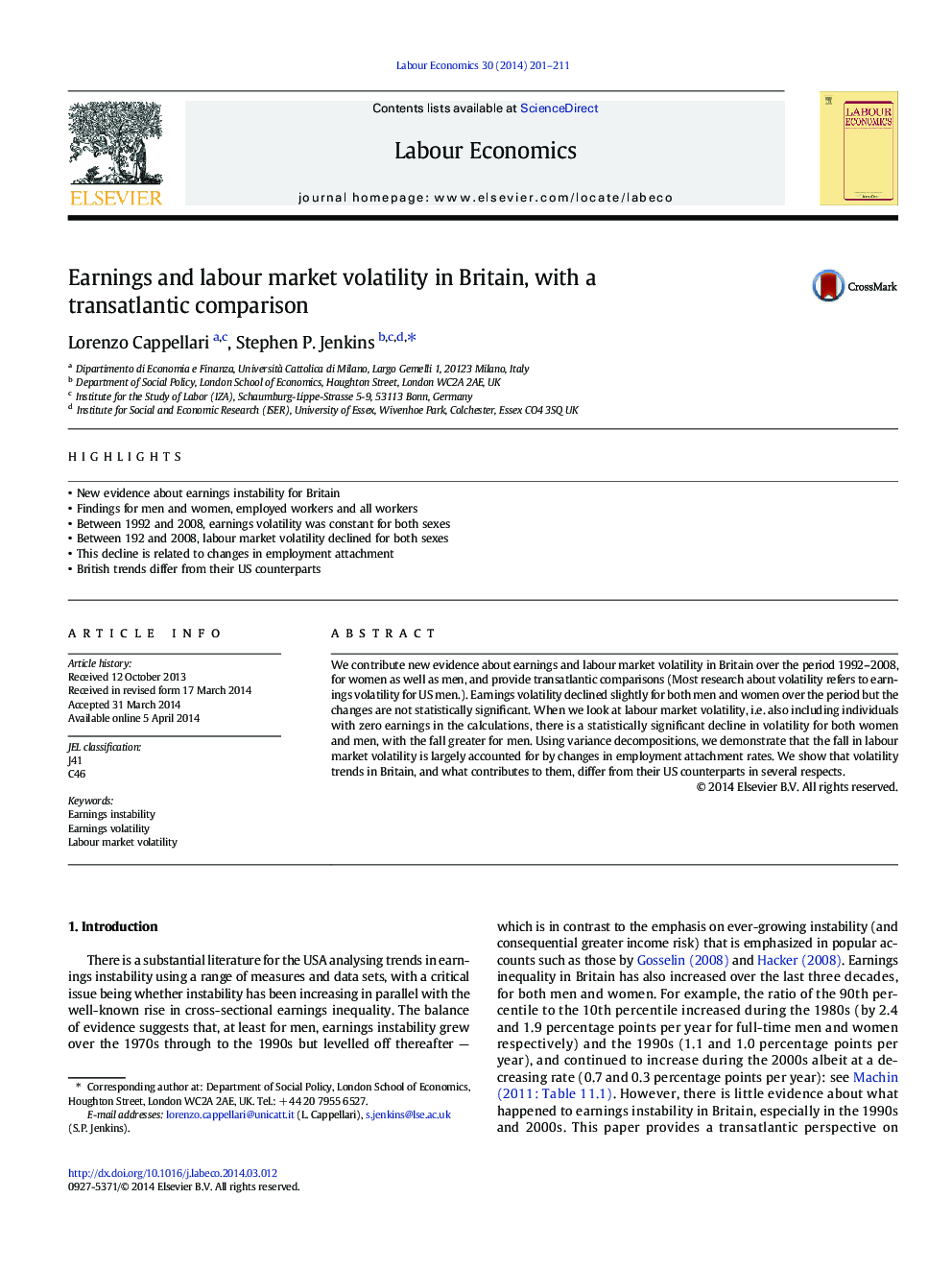| Article ID | Journal | Published Year | Pages | File Type |
|---|---|---|---|---|
| 972367 | Labour Economics | 2014 | 11 Pages |
•New evidence about earnings instability for Britain•Findings for men and women, employed workers and all workers•Between 1992 and 2008, earnings volatility was constant for both sexes•Between 192 and 2008, labour market volatility declined for both sexes•This decline is related to changes in employment attachment•British trends differ from their US counterparts
We contribute new evidence about earnings and labour market volatility in Britain over the period 1992–2008, for women as well as men, and provide transatlantic comparisons (Most research about volatility refers to earnings volatility for US men.). Earnings volatility declined slightly for both men and women over the period but the changes are not statistically significant. When we look at labour market volatility, i.e. also including individuals with zero earnings in the calculations, there is a statistically significant decline in volatility for both women and men, with the fall greater for men. Using variance decompositions, we demonstrate that the fall in labour market volatility is largely accounted for by changes in employment attachment rates. We show that volatility trends in Britain, and what contributes to them, differ from their US counterparts in several respects.
